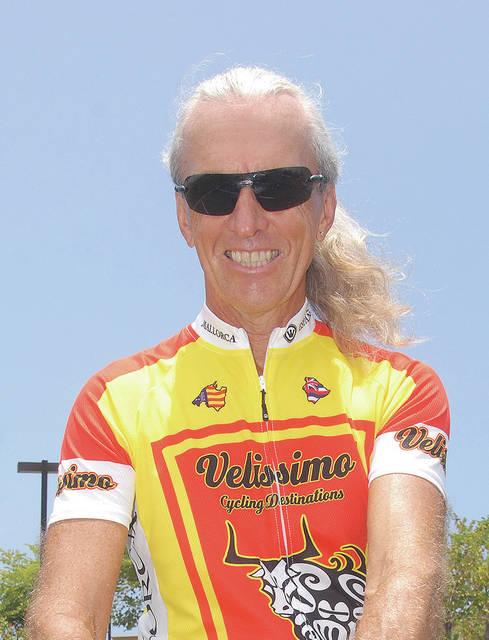KAILUA-KONA — Kona’s cycling community has rallied around Ray Jensen, a man who doesn’t even ride a bicycle. ADVERTISING KAILUA-KONA — Kona’s cycling community has rallied around Ray Jensen, a man who doesn’t even ride a bicycle. Jensen, 58, was
KAILUA-KONA — Kona’s cycling community has rallied around Ray Jensen, a man who doesn’t even ride a bicycle.
Jensen, 58, was struck by an unidentified Caucasian man in his late 20s or early 30s pedaling a mountain bike on the morning of July 21 while walking north on Queen Kaahumanu Highway. The collision left Jensen with two broken ribs and a ruptured spleen, landing him in a hospital bed for more than a week, including a long stint in the intensive care unit.
Now, members of People’s Advocacy for Trails Hawaii (PATH) and other local cyclists are reaching out to get Jensen back on a set of wheels of his own — four wheels, however, not two.
Franz Weber, a board member of PATH, has helped to coordinate the raising of $600 to help Jensen pay the registration and safety check fees for his jeep, as well as six months worth of car insurance. Jensen was on foot that morning because although he owns a car and has a valid license, he couldn’t currently afford to drive it legally.
No one affiliated with PATH or the greater Kona cycling community played any part in Jensen’s misfortune, but Weber explained why he felt compelled to visit Jensen in the hospital and subsequently offer help.
“We saw what happened and people felt bad for him because it was a cyclist who hit him,” Weber said. “Although (the man who hit him) is not really part of the cycling community, (these incidents) tend to reflect always on a common denominator.”
The culprit of the collision doesn’t ride professionally or for pleasure, as far as Claire Robinson knows. But Robinson, who is an avid cyclist and was part of a group who witnessed from a distance Jensen get run over two weeks ago, said she’s seen the man in question riding before.
She, her husband, Rick, and another of their friends were actually passed on the highway by the man on the mountain bike immediately preceding the collision.
“He had passed the three of us without warning, and that’s kind of perturbing to us because although we wear rear view mirrors, sometimes you can’t see people behind you,” she said. “Courtesy to most riders is you give warning before you pass. And the next thing you know, my husband looks up and sees him head straight into (Jensen).”
Robinson added it’s not the first time the man on the mountain bike has zipped past her riding group without observing appropriate etiquette — etiquette meant to help keep everyone using the road as safe as possible.
She and her husband — who stopped to help to Jensen that morning as he writhed in pain, tire tread visible on his body — donated $200 to help get him back behind the wheel and mobile again.
Robinson explained why it was important to the couple to do so, despite not being at fault.
“We want to send a message to the community that cyclists are not road rogues. We care about others,” she said. “It’s just unfortunate that one cyclist was not using safety.”
The man on the mountain bike told Jensen following the collision that he hadn’t noticed Jensen because he was looking down, another dangerous breach of cycling etiquette.
From a pedestrian angle, the best safety practices are to walk or run against the flow of traffic. There’s actually a law in Hawaii mandating them to do so. The point of that mandate is to provide a clear line of sight to any oncoming vehicle, motorized or otherwise, and hopefully avoid a collision if one is barreling toward them.
That doesn’t mean Jensen was at fault for the incident with the mountain bike. He was not. But walking against the flow of traffic may have saved him significant misfortune and discomfort.
Jensen returned home last week, and while his pain has subsided to a degree, he’s still feeling the lingering impact of being hit by a bicycle at a high speed.
“I’m so glad to be home,” he said Friday, two weeks to the day after the collision. “I can breathe fresh air. I’m sore still and I’m not quite up to 100 percent, but at least I can function.”
He can function, but he can’t walk all the way to work for either of his two jobs — a salesman at Macy’s and a dishwasher at Holuakoa Cafe. Both companies have told him not to worry about his employment, but he’s anxious to get back to work and hopes to do so by next weekend.
The help from Weber, the Robinsons and others at PATH will go a long way toward that goal, he said.
“I’m so grateful that they’re going to do that for me,” he said. “There’s no words to describe.”




